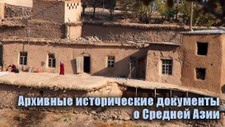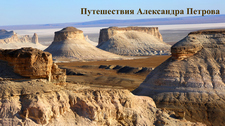Вы здесь
Zhumagali Ishana Mosque.
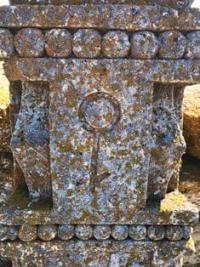
Ancient necropolises on Northern Cliff of Ustyurt Plateau.
“Over the graves, uniform, oblong monuments of different sizes painted in different colors are made. Mostly white, gray and blue. Sometimes the monuments look like a small quadrangular structure with a dome inside, which you can crawl through a small hole. It is empty inside, there is no grave. For some reason, such monuments are called “mulushki” and serve as an excellent place to shelter from bad weather.”
“Winter trip from Tashkent to Ust-Urt.” Vladimir Alexandrov. 1881 – 1882.
Trip from settlement Bozoy to Northern Cliff of Ustyurt Plateau.
Zhumagali Ishan Mosque is located at an altitude of 38 meters above sea level, in Taskabak valley, between Chatvai and Karakol dams, 12 kilometers southwest of Cape Chagrai located on Donyz Tau East cliff, 19.5 kilometers north and slightly west of Mount Kyzylshikh, 186 meters above sea level, 99.5 kilometers east and slightly south of village of Diyar, 218 meters southeast of ancient cemetery in Bayganinsky district in south of Aktobe region.
Zhumagali Ishan Mosque is a significant historical and cultural monument of the Aktobe region. It reflects the spiritual heritage of the region and is of interest to researchers and tourists. The religious building of the Zhumagali Ishan includes a large cemetery, residential and outbuildings.
History of Zhumagali Ishan Mosque.
Archaeological study of the Northern Ustyurt plateau cliff, as a special historical and cultural region, reveals its history, which touches upon the Neolithic era, the area has always been populated in the harsh desert conditions at different stages of historical development.
The area located north of the Northern Ustyurt cliff, between the Donyz Tau Western and Eastern cliffs were populated in ancient times. The settlement was confined to the ancient bed of the Shagan River, which ended in the Taskabak tract and here, through numerous dams that have preserved the names of the people who erected them: Chatvai, Ivraim, Karakol, Taskabak, water accumulation occurred.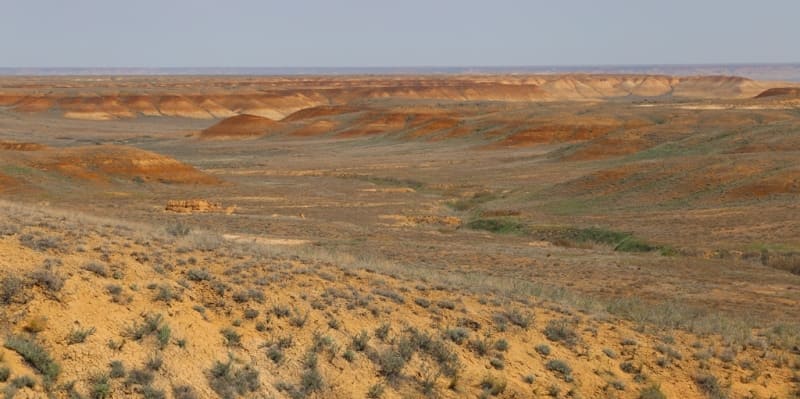
The dams were designed to retain water and through irrigation ditches it was used on agricultural lands, thus the mouth of the Shagan River was used. The Aksay descent, which is located 26 kilometers southeast of the Zhumagali Ishan mosque, was a transport and trade route between the village of Chimbay in Karakalpakstan and the village of Temir in the Aktobe region.
According to archaeologists, the mosque was built in the XIXth century.
Architectural features of Zhumagali Ishan mosque.
The mosque is a small building with four domes, which gives it a special expressiveness and uniqueness. Archaeologists believe that such a design was rare for the region and indicates the influence of various architectural traditions. Unfortunately, detailed data on the internal elements and decorative features of the mosque are limited due to insufficient preservation and the lack of detailed research.
The territory of the monument was used as a settlement until the late 1990s. Many buildings from the XIXth - early XXth centuries were lost. A group of archaeologists led by Nursultan Bairov studied the Zhumagali Ishan mosque. The mosque is one of the Kazakh religious buildings of the late XIXth - early XXth centuries with an original compositional and planning solution.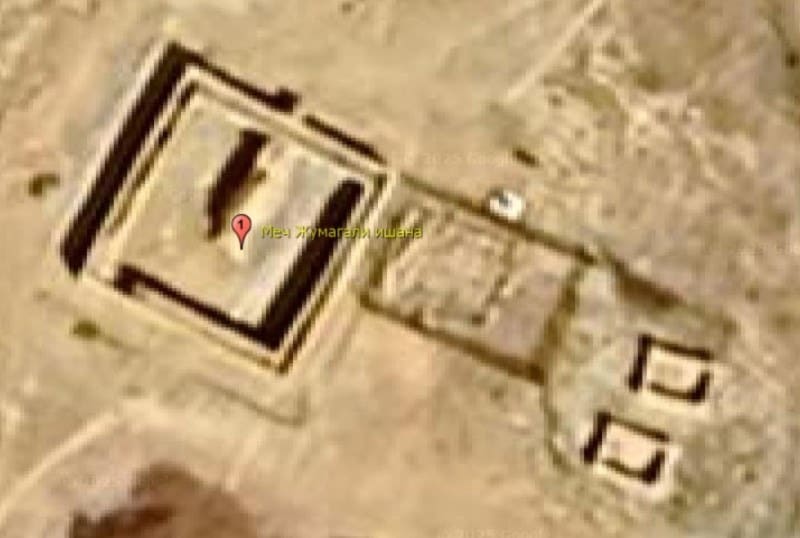
According to archaeologists, the Zhumagali Ishan mosque first became known to science in the early 90s of the last century thanks to ethnographic expeditions led by Serik Azhigali. The scientist attributed the monument to religious and residential complexes, briefly describing the ruins of the mosque, residential buildings and a cemetery.
The mosque was built from adobe bricks on clay mortar. Stone slabs were also used during construction, which reinforced the arches and upper levels of the masonry. Currently, the walls are heavily damaged, the southwestern, western, eastern and northeastern walls are in better condition.
The object consists of two rooms. At the same time, the inner wall is much wider, which was probably due to the construction of a pylon and a furnace. The ceiling of the mosque is lost. The interior is also partially preserved. Due to the poor state of preservation, it was not possible to determine the location of the entrance or some light openings by the start of the excavations.
Two openings with arched ends were recorded in the northwestern and southwestern walls. The southwestern, western, eastern and northeastern walls were better preserved. The height of the largest wall was 2 meters, the width was 0.75 meters.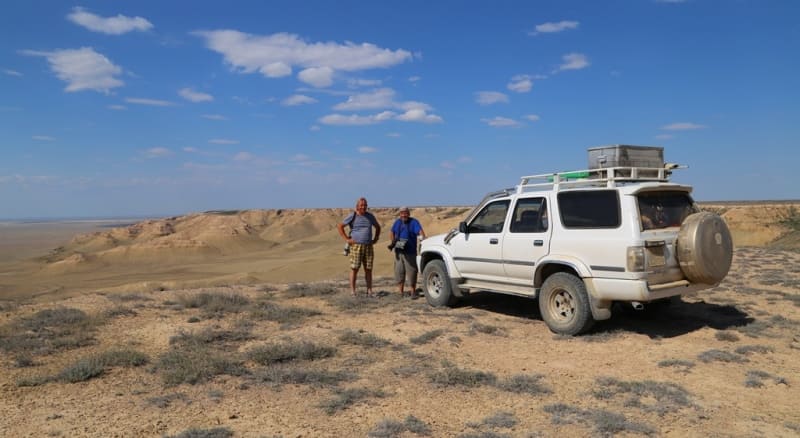
Two light openings with arched ends were recorded in the northwestern and southwestern walls. Two arches were observed in the wall inside the mosque. The inner wall was much wider than the outer ones. Archaeologists believe that it was a pylon that served as a base for holding the domes.
- "The mosque was probably covered with four domes, the bases of which rested on the pylon and on the arches inside the room. This can be judged by the greatest thickness of the rubble, which in plan resembles an internal cross layout. In the upper part of the wall, stone slabs were fixed in the thickness of the masonry, probably used for stability," said archaeologist Farhad Dosmuratov.
Restoration of Zhumagali Ishan Mosque.
Currently, the Zhumagali Ishan Mosque requires restoration work to preserve its historical and cultural value. Modern restorers have managed to erect new walls. Later, conservation of objects was carried out - walls, windows, doors and arches. The Zhumagali Ishan Mosque is included in the state list of historical and cultural monuments of local importance.
Grave of Zhumagali Ishan.
“The grave of Zhumagali Ishan is located near the southeastern wall, 1.5 - 2 meters from the base of the mosque. The grave structure was made of wild stone. It has a rectangular shape. At the northeastern wall there is a square tombstone made of shell rock (a local building material) with an epitaph in Arabic script.
The grave area is surrounded by an iron fence. To the northeast, outside the fence, there is a memorial plaque describing the life of Zhumagali Ishan and a bench. To the east there are two more graves with fences made of sand-lime brick,” the documents presented by the Center for Research, Restoration and Protection of Historical and Cultural Heritage say.
Zhumagali Ishan passed away in 1906. He was buried next to the mosque.
Geographic coordinates of Zhumagali Ishan mosque: N46°37'22 E57°19'20
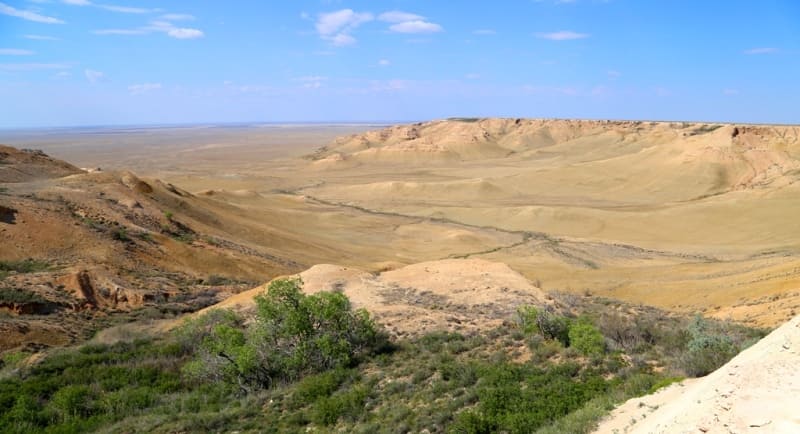
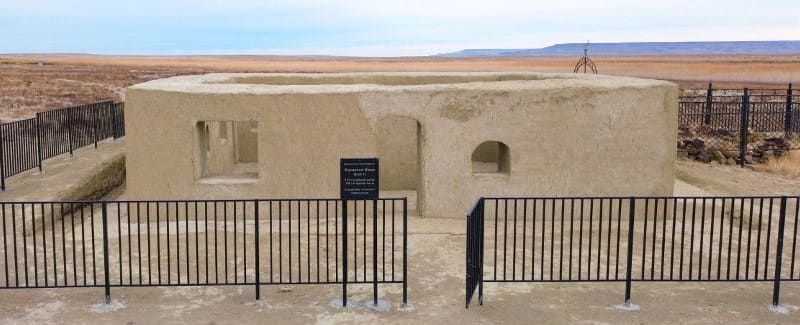
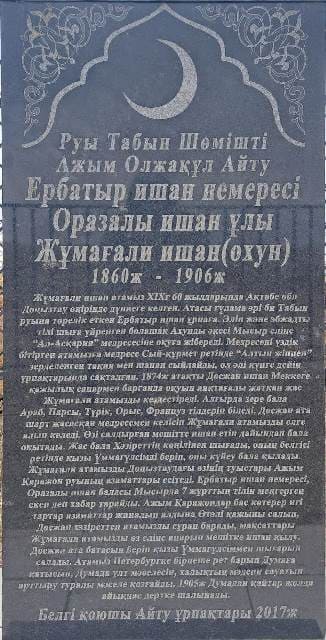
Authority and photos by:
Alexander Petrov.
Author: Renat Taipov.
https://aktobetimes.kz/novosti/11892-kakie-tajny-hranit-mechet-postroennaja-v-kazahskom-mezhdumore.html





